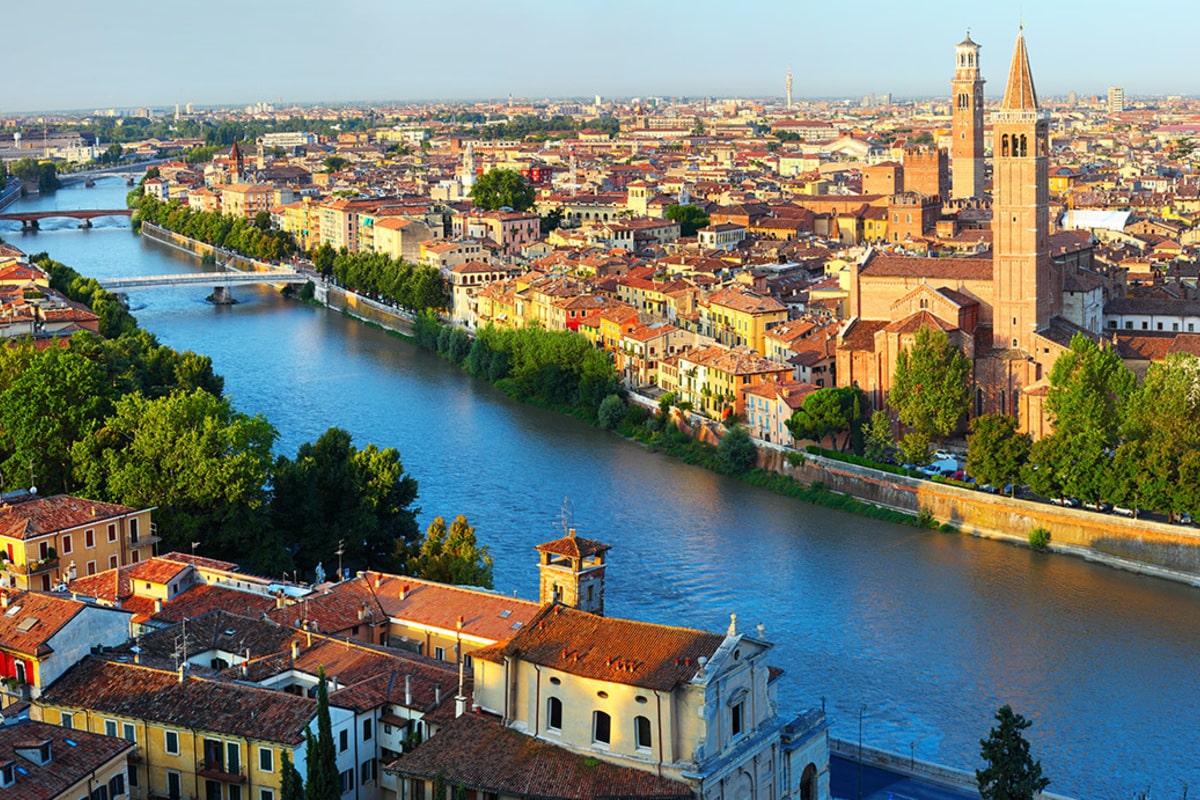Verona is not just an ancient city in northern Italy but a true treasure trove of culture, architecture, and romance. Thanks to its centuries-old heritage and strong ties to literature—especially through Shakespeare’s Romeo and Juliet—it attracts millions of tourists from around the world every year. The city preserves landmarks from Roman, medieval, and Renaissance periods, all harmoniously woven into its modern urban landscape. Verona captivates not only lovers but also historians, artists, and culinary explorers. Here are fascinating facts about Verona that you may not have known.
- Verona is one of the oldest cities in northern Italy, with its origins dating back to the 4th century BCE. In 89 BCE, it became part of the Roman Empire and evolved into an important military and trade center.
- The city is home to one of the best-preserved Roman amphitheaters in Europe. Built in the 1st century CE, the Verona Arena still hosts open-air opera performances and can accommodate more than 15,000 spectators.
- Verona gained worldwide fame as the setting for Shakespeare’s Romeo and Juliet. Although the characters are fictional, the city features the so-called Juliet’s House, complete with a balcony and a bronze statue that has become a symbol of love.
- More than 3 million tourists visit Verona each year, many drawn by its literary connection to Shakespeare. The city embraces this identity through festivals, theatrical productions, and souvenir culture.
- The historic center of Verona is a UNESCO World Heritage Site. This designation recognizes the city’s remarkable architectural legacy from antiquity through the Renaissance.
- The Adige River runs through Verona and adds to the city’s scenic beauty. In ancient times, it served as a vital trade route and remains an essential part of the urban landscape.
- Verona features several medieval bridges, the most famous being the Ponte Pietra, originally built in the 1st century BCE. It is the only surviving Roman bridge in the city, reconstructed after being damaged during World War II.
- Castelvecchio is one of Verona’s most iconic landmarks. This 14th-century fortress now houses a museum featuring masterpieces of Italian painting and sculpture.
- Piazza delle Erbe is Verona’s main market square, which has served as a public center since Roman times. Today, it is lined with cafés, market stalls, and impressive historic architecture.
- The city’s architecture showcases a blend of Roman, Gothic, Renaissance, and Baroque styles. This fusion gives Verona its uniquely atmospheric streets and squares.
- Verona is home to one of Italy’s oldest universities, founded in the 14th century. The institution continues to play a significant role in regional education and research.
- The surrounding region is renowned for wine production. Local varieties such as Valpolicella and Amarone are internationally celebrated and exported worldwide.
- The Basilica of San Zeno Maggiore is a prime example of Romanesque architecture. It is famous for its bronze doors adorned with reliefs and its beautifully preserved frescoes.
- In the Middle Ages, Verona was an independent commune governed by the powerful Scaliger family. Their Gothic tombs, known as the Arche Scaligere, can be seen near the church of Santa Maria Antica.
- Verona has changed hands multiple times throughout history. It was ruled by the Venetian Republic, later by Napoleon and the Austrian Empire, and eventually became part of unified Italy in the 19th century.
- The city is surrounded by well-preserved defensive walls built during various historical periods. Some sections date back to Roman times, while others originate from the medieval and Renaissance eras.
- Every summer, Verona hosts its famous Opera Festival. The performances take place under the open sky in the arena, offering a unique and unforgettable acoustic and visual experience.
- The city boasts numerous museums, including the Archaeological Museum, the Fresco Museum, and the Gallery of Modern Art. Each offers insights into the art and culture of different eras.
- Verona is filled with historic churches, including the Verona Cathedral (Duomo), San Fermo, and Santa Eufemia. Each church holds architectural, artistic, and spiritual significance.
- Verona is also becoming a major destination for culinary tourism. Local dishes include polenta, handmade pasta, and traditional delicacies such as donkey meat steak, which is considered a regional specialty.
Verona is more than just the city from Shakespeare’s play—it is an open-air museum where every street and building tells a story. These interesting facts reveal the city’s rich and layered identity, spanning from ancient times through the medieval era to modern-day Italy. Verona enchants, inspires, and welcomes every visitor with its unique charm. A journey to this city is a timeless encounter in the heart of Italy.





